-
Report Prologue
-
Market Introduction
-
Market Definition
-
15
-
Scope Of The Study 15
- Research Objectives 15
-
List
-
Of Assumptions 15
-
Market Structure 15
-
Key Takeaways 15
-
3
-
Market Insights
-
Research Methodology
-
Research Process 18
-
Primary Research 18
-
Secondary Research 18
-
Market Size Estimation
-
19
-
Forecast Model 19
-
Market Dynamics
-
Introduction 21
-
Drivers 21
- Increasing Use Of Superabsorbent Polymers In Various
- Growth Of The Construction Industry 21
- Rising
-
Applications 21
-
Demand For Water-Based Adhesives 21
-
Restraints 22
- Rising Environment
- Rise In Price Of Raw Materials 22
- Increase In The Use Of Bio-Based Acrylic Acid 23
- Increasing Demand From Emerging Economies 23
-
Concerns And Health Hazards 22
-
5.4
-
Opportunities 23
-
Market Factor Analysis
-
Market Factor Analysis 25
- Raw Material Suppliers 25
- Distribution Channel 26
- End-Users
-
6.1.2
-
Acrylic Acid Producers 25
-
26
-
Porter’s Five Forces Model 27
- Threat Of New Entrants
- Threat Of Rivalry 27
- Threat Of Substitutes 27
- Bargaining Power Of Buyers 28
-
27
-
6.2.4
-
Bargaining Power Of Suppliers 28
-
7
-
Global Acrylic Acid Market, By Type
-
Introduction 29
-
Methyl Acrylate
-
30
-
Ethyl Acrylate 34
-
Butyl Acrylate 39
-
2-Ethylhexyl Acrylate
-
49
-
Elastomers 54
-
Superabsorbent 56
-
Water Treatment Polymers
-
58
-
Others 58
-
Global Acrylic Acid Market, By Application
-
8.1
-
Introduction 64
-
Adhesives & Sealants 66
-
Diaper 71
-
8.4
-
Surface Coating 76
-
Paper Industry 81
-
Cement Modifiers 86
-
8.7
-
Textile 88
-
Anti-Scalant 90
-
Adult Incontinence Products 92
-
8.10
-
Others 94
-
Global Acrylic Acid Market, By Region
-
Introduction 97
-
North America 101
- US… 1059.2.2 Canada 107
-
Europe
- Germany 113
- UK 116
- France 118
- Spain
- Rest Of Europe 124
-
109
-
121
-
Asia-Pacific 127
- China 131
- Japan 134
- India 137
- Rest Of Asia-Pacific 140
- Turkey 144
- Israel 145
- GCC 147
- Rest Of The Middle East & Africa
-
9.5
-
Middle East & Africa 141
-
9.5.3
-
North Africa 146
-
148
-
Latin America 151
- Brazil 152
- Argentina 153
- Mexico 155
- Rest Of Latin America 157
-
Competitive Landscape
-
Introduction 160
-
Market Strategy Analysis 160
-
Key Developments
-
Of Major Market Players 160
-
Company Profile
-
BASF SE 164
- Product/Business Segment Overview 164
- Key Developments 165
-
11.1.1
-
Company Overview 164
-
11.1.3
-
Financial Overview 165
-
The Dow Chemical
- Company Overview 166
- Product/Business Segment
- Financial Overview 167
- Key Developments 167
-
Company 166
-
Overview 166
-
Arkema 168
- Company Overview 168
- Product/Business
- Financial Overview 169
- Key Developments
-
Segment Overview 168
-
169
-
Nippon Shokubai Co. Ltd 170
- Company Overview 170
- Financial Overview 171
-
11.4.2
-
Product/Business Segment Overview 170
-
11.4.4
-
Key Developments 171
-
LG Chemicals 172
- Company Overview 172
- Product/Business Segment Overview 172
- Financial Overview 173
- Key Developments 173
-
Shenyang Tianlongyang Chemical Co. Ltd 174
- Company Overview 174
- Product/Business Segment Overview 174
- Financial Overview 175
-
11.6..4 Key Developments 175
-
Mitsubishi
- Company Overview 176
- Product/Business Segment
- Financial Overview 177
- Key Developments 177
-
Chemical 176
-
Overview 176
-
Evonik Industries 178
- Company Overview 178
- Product/Business
- Financial Overview 179
- Key Developments
-
Segment Overview 178
-
179
-
Taixing Jurong Chemical Co. Ltd 180
- Company Overview 180
- Product/Business Segment Overview 180
- Financial Overview 181
- Key Developments 181
-
PJSC Sibur Holding 182
- Company
- Product/Business Segment Overview 182
- Financial
- Key Developments 183
-
Overview 182
-
Overview 183
-
Hexion Inc. 184
- Product/Business Segment Overview 184
- Key Developments 185
-
11.11.1
-
Company Overview 184
-
11.11.3
-
Financial Overview 185
-
Conclusion
-
List Of Tables
-
GLOBAL ACRYLIC ACID MARKET, BY TYPE, 2020-2027
-
(USD MILLION) 28
-
GLOBAL ACRYLIC ACID MARKET, BY TYPE, 2020-2027 (METRIC
-
TONS) 29
-
GLOBAL ACRYLIC ACID MARKET FOR METHYL ACRYLATE, BY REGION,
-
GLOBAL ACRYLIC ACID MARKET FOR METHYL ACRYLATE,
-
BY REGION, 2020-2027 (METRIC TONS) 31
-
NORTH AMERICA: ACRYLIC ACID MARKET
-
FOR METHYL ACRYLATE, BY REGION, 2020-2027 (USD MILLION) 31
-
NORTH AMERICA:
-
ACRYLIC ACID MARKET FOR METHYL ACRYLATE, BY REGION, 2020-2027 (METRIC TONS) 32
-
EUROPE: ACRYLIC ACID MARKET FOR METHYL ACRYLATE, BY REGION, 2020-2027
-
(USD MILLION) 32
-
EUROPE: ACRYLIC ACID MARKET FOR METHYL ACRYLATE, BY
-
REGION, 2020-2027 (METRIC TONS) 33
-
ASIA-PACIFIC: ACRYLIC ACID MARKET
-
FOR METHYL ACRYLATE, BY REGION, 2020-2027 (USD MILLION) 33
-
ASIA-PACIFIC:
-
ACRYLIC ACID MARKET FOR METHYL ACRYLATE, BY REGION, 2020-2027 (METRIC TONS) 34
-
GLOBAL ACRYLIC ACID MARKET FOR ETHYL ACRYLATE, BY REGION, 2020-2027 (USD
-
MILLION) 35
-
GLOBAL ACRYLIC ACID MARKET FOR ETHYL ACRYLATE, BY REGION,
-
NORTH AMERICA: ACRYLIC ACID MARKET FOR
-
ETHYL ACRYLATE, BY REGION, 2020-2027 (USD MILLION) 36
-
NORTH AMERICA:
-
ACRYLIC ACID MARKET FOR ETHYL ACRYLATE, BY REGION, 2020-2027 (METRIC TONS) 37
-
EUROPE: ACRYLIC ACID MARKET FOR ETHYL ACRYLATE, BY REGION, 2020-2027
-
(USD MILLION) 37
-
EUROPE: ACRYLIC ACID MARKET FOR ETHYL ACRYLATE ,
-
BY REGION, 2020-2027 (METRIC TONS) 38
-
ASIA PACIFIC: ACRYLIC ACID MARKET
-
FOR ETHYL ACRYLATE, BY REGION, 2020-2027 (USD MILLION) 38
-
ASIA PACIFIC:
-
ACRYLIC ACID MARKET FOR ETHYL ACRYLATE, BY REGION, 2020-2027 (METRIC TONS) 39
-
GLOBAL ACRYLIC ACID MARKET FOR BUTYL ACRYLATE, BY REGION, 2020-2027 (USD
-
MILLION) 40
-
GLOBAL ACRYLIC ACID MARKET FOR BUTYL ACRYLATE, BY REGION,
-
NORTH AMERICA: ACRYLIC ACID MARKET FOR
-
BUTYL ACRYLATE, BY REGION, 2020-2027 (USD MILLION) 41
-
NORTH AMERICA:
-
ACRYLIC ACID MARKET FOR BUTYL ACRYLATE, BY REGION, 2020-2027 (METRIC TONS) 42
-
EUROPE: ACRYLIC ACID MARKET FOR BUTYL ACRYLATE, BY REGION, 2020-2027
-
(USD MILLION) 42
-
EUROPE: ACRYLIC ACID MARKET FOR BUTYL ACRYLATE, BY
-
REGION, 2020-2027 (METRIC TONS) 43
-
ASIA PACIFIC: ACRYLIC ACID MARKET
-
FOR BUTYL ACRYLATE, BY REGION, 2020-2027 (USD MILLION) 43
-
ASIA PACIFIC:
-
ACRYLIC ACID MARKET FOR BUTYL ACRYLATE, BY REGION, 2020-2027 (METRIC TONS) 44
-
GLOBAL ACRYLIC ACID MARKET FOR 2-ETHYLHEXYL ACRYLATE, BY TYPE, 2020-2027
-
(USD MILLION) 45
-
GLOBAL ACRYLIC ACID MARKET FOR 2-ETHYLHEXYL ACRYLATE,
-
BY TYPE, 2020-2027 (METRIC TONS) 46
-
NORTH AMERICA: ACRYLIC ACID MARKET
-
FOR 2-ETHYLHEXYL ACRYLATE, BY REGION, 2020-2027 (USD MILLION) 46
-
NORTH
-
AMERICA: ACRYLIC ACID MARKET FOR 2-ETHYLHEXYL ACRYLATE, BY REGION, 2020-2027 (METRIC
-
TONS) 47
-
EUROPE: ACRYLIC ACID MARKET FOR 2-ETHYLHEXYL ACRYLATE, BY
-
REGION, 2020-2027 (USD MILLION) 47
-
EUROPE: ACRYLIC ACID MARKET FOR
-
2-ETHYLHEXYL ACRYLATE, BY REGION, 2020-2027 (METRIC TONS) 48
-
ASIA
-
PACIFIC: ACRYLIC ACID MARKET FOR 2-ETHYLHEXYL ACRYLATE, BY REGION, 2020-2027 (USD
-
MILLION) 48
-
ASIA PACIFIC: ACRYLIC ACID MARKET FOR 2-ETHYLHEXYL ACRYLATE,
-
BY REGION, 2020-2027 (METRIC TONS) 49
-
GLOBAL ACRYLIC ACID MARKET FOR
-
ELASTOMERS, BY TYPE, 2020-2027 (USD MILLION) 50
-
GLOBAL ACRYLIC ACID
-
MARKET FOR ELASTOMERS, BY TYPE, 2020-2027 (METRIC TONS) 51
-
NORTH AMERICA:
-
ACRYLIC ACID MARKET FOR ELASTOMERS, BY REGION, 2020-2027 (USD MILLION) 51
-
TABLE
-
NORTH AMERICA: ACRYLIC ACID MARKET FOR ELASTOMERS, BY REGION, 2020-2027 (METRIC
-
TONS) 52
-
EUROPE: ACRYLIC ACID MARKET FOR ELASTOMERS, BY REGION, 2020-2027
-
(USD MILLION) 52
-
EUROPE: ACRYLIC ACID MARKET FOR ELASTOMERS, BY REGION,
-
ASIA PACIFIC: ACRYLIC ACID MARKET FOR ELASTOMERS,
-
BY REGION, 2020-2027 (USD MILLION) 53
-
ASIA PACIFIC: ACRYLIC ACID MARKET
-
FOR ELASTOMERS, BY REGION, 2020-2027 (METRIC TONS) 54
-
GLOBAL ACRYLIC
-
ACID MARKET FOR SUPERABSORBENT, BY TYPE, 2020-2027 (USD MILLION) 55
-
TABLE 44
-
GLOBAL ACRYLIC ACID MARKET FOR SUPERABSORBENT, BY TYPE, 2020-2027 (METRIC TONS)
-
56
-
NORTH AMERICA: ACRYLIC ACID MARKET FOR SUPERABSORBENT, BY REGION,
-
NORTH AMERICA: ACRYLIC ACID MARKET FOR
-
SUPERABSORBENT, BY REGION, 2020-2027 (METRIC TONS) 57
-
EUROPE: ACRYLIC
-
ACID MARKET FOR SUPERABSORBENT, BY REGION, 2020-2027 (USD MILLION) 57
-
TABLE
-
EUROPE: ACRYLIC ACID MARKET FOR SUPERABSORBENT, BY REGION, 2020-2027 (METRIC
-
TONS) 58
-
ASIA PACIFIC: ACRYLIC ACID MARKET FOR SUPERABSORBENT, BY
-
REGION, 2020-2027 (USD MILLION) 58
-
ASIA PACIFIC: ACRYLIC ACID MARKET
-
FOR SUPERABSORBENT, BY REGION, 2020-2027 (METRIC TONS) 59
-
GLOBAL ACRYLIC
-
ACID MARKET FOR WATER TREATMENT, BY TYPE, 2020-2027 (USD MILLION) 60
-
TABLE
-
GLOBAL ACRYLIC ACID MARKET FOR WATER TREATMENT, BY REGION, 2020 (%) 60
-
TABLE
-
GLOBAL ACRYLIC ACID MARKET FOR WATER TREATMENT, BY TYPE, 2020-2027 (METRIC TONS)
-
61
-
NORTH AMERICA: ACRYLIC ACID MARKET FOR WATER TREATMENT, BY REGION,
-
NORTH AMERICA: ACRYLIC ACID MARKET FOR
-
WATER TREATMENT, BY REGION, 2020-2027 (METRIC TONS) 61
-
EUROPE: ACRYLIC
-
ACID MARKET FOR WATER TREATMENT, BY REGION, 2020-2027 (USD MILLION) 62
-
TABLE
-
EUROPE: ACRYLIC ACID MARKET FOR WATER TREATMENT, BY REGION, 2020-2027 (METRIC
-
TONS) 62
-
ASIA PACIFIC: ACRYLIC ACID MARKET FOR WATER TREATMENT, BY
-
REGION, 2020-2027 (USD MILLION) 63
-
ASIA PACIFIC: ACRYLIC ACID MARKET
-
FOR WATER TREATMENT, BY REGION, 2020-2027 (METRIC TONS) 63
-
GLOBAL
-
ACRYLIC ACID MARKET, BY APPLICATION, 2020-2027 (USD MILLION) 65
-
GLOBAL
-
ACRYLIC ACID MARKET, BY APPLICATION, 2020-2027 (METRIC TONS) 66
-
GLOBAL
-
ADHESIVES SHARE FOR ACRYLIC ACID MARKET, BY REGION, 2020-2027 (METRIC TONS) 68
-
NORTH AMERICA: ADHESIVES SHARE FOR ACRYLIC ACID MARKET, BY REGION, 2020-2027
-
(USD MILLION) 68
-
NORTH AMERICA: ADHESIVES SHARE FOR ACRYLIC ACID MARKET,
-
BY REGION, 2020-2027 (METRIC TONS) 69
-
EUROPE: ADHESIVES SHARE FOR
-
ACRYLIC ACID MARKET, BY REGION, 2020-2027 (USD MILLION) 69
-
EUROPE:
-
ADHESIVES SHARE FOR ACRYLIC ACID MARKET, BY REGION, 2020-2027 (METRIC TONS) 70
-
ASIA PACIFIC: ADHESIVES SHARE FOR ACRYLIC ACID MARKET, BY REGION, 2020-2027
-
(USD MILLION) 70
-
ASIA PACIFIC: ADHESIVES SHARE FOR ACRYLIC ACID MARKET,
-
BY REGION, 2020-2027 (METRIC TONS) 71
-
GLOBAL DIAPER SHARE FOR ACRYLIC
-
ACID MARKET, BY REGION, 2020-2027 (USD MILLION) 72
-
GLOBAL DIAPER SHARE
-
FOR ACRYLIC ACID MARKET, BY REGION, 2020-2027 (METRIC TONS) 73
-
NORTH
-
AMERICA: DIAPER SHARE FOR ACRYLIC ACID MARKET, BY REGION, 2020-2027 (USD MILLION)
-
73
-
NORTH AMERICA: DIAPER SHARE FOR ACRYLIC ACID MARKET, BY REGION,
-
EUROPE: DIAPER SHARE FOR ACRYLIC ACID MARKET,
-
BY REGION, 2020-2027 (USD MILLION) 74
-
EUROPE: DIAPER SHARE FOR ACRYLIC
-
ACID MARKET, BY REGION, 2020-2027 (METRIC TONS) 75
-
ASIA PACIFIC: DIAPER
-
SHARE FOR ACRYLIC ACID MARKET, BY REGION, 2020-2027 (USD MILLION) 75
-
TABLE
-
ASIA PACIFIC: DIAPER SHARE FOR ACRYLIC ACID MARKET, BY REGION, 2020-2027 (METRIC
-
TONS) 76
-
GLOBAL SURFACE COATING SHARE FOR ACRYLIC ACID MARKET, BY
-
REGION, 2020-2027 (USD MILLION) 77
-
GLOBAL SURFACE COATING SHARE FOR
-
ACRYLIC ACID MARKET, BY REGION, 2020-2027 (METRIC TONS) 78
-
NORTH AMERICA:
-
SURFACE COATING SHARE FOR ACRYLIC ACID MARKET, BY REGION, 2020-2027 (USD MILLION)
-
78
-
NORTH AMERICA: SURFACE COATING SHARE FOR ACRYLIC ACID MARKET, BY
-
REGION, 2020-2027 (METRIC TONS) 79
-
EUROPE: SURFACE COATING SHARE FOR
-
ACRYLIC ACID MARKET, BY REGION, 2020-2027 (USD MILLION) 79
-
EUROPE:
-
SURFACE COATING SHARE FOR ACRYLIC ACID MARKET, BY REGION, 2020-2027 (METRIC TONS)
-
80
-
ASIA PACIFIC: SURFACE COATING SHARE FOR ACRYLIC ACID MARKET, BY
-
REGION, 2020-2027 (USD MILLION) 80
-
ASIA PACIFIC: SURFACE COATING SHARE
-
FOR ACRYLIC ACID MARKET, BY REGION, 2020-2027 (METRIC TONS) 81
-
GLOBAL
-
PAPER INDUSTRY MARKET FOR ACRYLIC ACID MARKET, BY REGION, 2020-2027 (USD MILLION)
-
82
-
GLOBAL PAPER INDUSTRY SHARE FOR ACRYLIC ACID MARKET, BY REGION,
-
NORTH AMERICA: PAPER INDUSTRY SHARE FOR
-
ACRYLIC ACID MARKET, BY REGION, 2020-2027 (USD MILLION) 83
-
NORTH AMERICA:
-
PAPER INDUSTRY SHARE FOR ACRYLIC ACID MARKET, BY REGION, 2020-2027 (METRIC TONS)
-
84
-
EUROPE: PAPER INDUSTRY SHARE FOR ACRYLIC ACID MARKET, BY REGION,
-
EUROPE: PAPER INDUSTRY SHARE FOR ACRYLIC
-
ACID MARKET, BY REGION, 2020-2027 (METRIC TONS) 85
-
ASIA PACIFIC: PAPER
-
INDUSTRY SHARE FOR ACRYLIC ACID MARKET, BY REGION, 2020-2027 (USD MILLION) 85
-
ASIA PACIFIC: PAPER INDUSTRY SHARE FOR ACRYLIC ACID MARKET, BY REGION,
-
GLOBAL CEMENT MODIFIERS SHARE FOR ACRYLIC
-
ACID MARKET, BY REGION, 2020-2027 (USD MILLION) 87
-
GLOBAL CEMENT MODIFIERS
-
SHARE FOR ACRYLIC ACID MARKET, BY REGION, 2020-2027 (METRIC TONS) 88
-
TABLE
-
NORTH AMERICA: CEMENT MODIFIERS SHARE FOR ACRYLIC ACID MARKET, BY REGION, 2020-2027
-
(USD MILLION) 88
-
NORTH AMERICA: CEMENT MODIFIERS SHARE FOR ACRYLIC
-
ACID MARKET, BY REGION, 2020-2027 (METRIC TONS) 89
-
EUROPE: CEMENT
-
MODIFIERS SHARE FOR ACRYLIC ACID MARKET, BY REGION, 2020-2027 (USD MILLION) 89
-
EUROPE: CEMENT MODIFIERS SHARE FOR ACRYLIC ACID MARKET, BY REGION, 2020-2027
-
(METRIC TONS) 90
-
ASIA PACIFIC: CEMENT MODIFIERS SHARE FOR ACRYLIC
-
ACID MARKET, BY REGION, 2020-2027 (USD MILLION) 90
-
ASIA PACIFIC:
-
CEMENT MODIFIERS SHARE FOR ACRYLIC ACID MARKET, BY REGION, 2020-2027 (METRIC TONS)
-
91
-
GLOBAL OTHERS SHARE FOR ACRYLIC ACID MARKET, BY REGION, 2020-2027
-
(USD MILLION) 92
-
GLOBAL OTHERS SHARE FOR ACRYLIC ACID MARKET, BY
-
REGION, 2020-2027 (METRIC TONS) 93
-
NORTH AMERICA: OTHERS SHARE FOR
-
ACRYLIC ACID MARKET, BY REGION, 2020-2027 (USD MILLION) 93
-
NORTH
-
AMERICA: OTHERS SHARE FOR ACRYLIC ACID MARKET, BY REGION, 2020-2027 (METRIC TONS)
-
94
-
EUROPE: OTHERS SHARE FOR ACRYLIC ACID MARKET, BY REGION, 2020-2027
-
(USD MILLION) 94
-
EUROPE: OTHERS SHARE FOR ACRYLIC ACID MARKET, BY
-
REGION, 2020-2027 (METRIC TONS) 95
-
ASIA PACIFIC: OTHERS SHARE FOR
-
ACRYLIC ACID MARKET, BY REGION, 2020-2027 (USD MILLION) 95
-
ASIA PACIFIC:
-
OTHERS SHARE FOR ACRYLIC ACID MARKET, BY REGION, 2020-2027 (METRIC TONS) 96
-
TABLE
-
GLOBAL ACRYLIC ACID MARKET, BY REGION, 2020-2027 (USD MILLION) 97
-
TABLE
-
GLOBAL ACRYLIC ACID MARKET, BY REGION, 2020-2027 (METRIC TONS) 98
-
TABLE
-
GLOBAL ACRYLIC ACID MARKET, BY TYPE, 2020-2027 (USD MILLION) 99
-
TABLE 112
-
GLOBAL ACRYLIC ACID MARKET, BY TYPE, 2020-2027 (METRIC TONS) 99
-
GLOBAL
-
ACRYLIC ACID MARKET, BY APPLICATION, 2020-2027 (USD MILLION) 100
-
TABLE 114
-
GLOBAL ACRYLIC ACID MARKET, BY APPLICATION, 2020-2027 (METRIC TONS) 100
-
TABLE
-
NORTH AMERICA: ACRYLIC ACID MARKET, BY COUNTRY, 2020-2027 (USD MILLION) 101
-
NORTH AMERICA: ACRYLIC ACID MARKET, BY COUNTRY, 2020-2027 (METRIC TONS)
-
101
-
NORTH AMERICA: ACRYLIC ACID MARKET, BY TYPE, 2020-2027 (USD MILLION)
-
102
-
NORTH AMERICA: ACRYLIC ACID MARKET, BY TYPE, 2020-2027 (METRIC
-
TONS) 102
-
NORTH AMERICA: ACRYLIC ACID MARKET, BY APPLICATION, 2020-2027
-
(USD MILLION) 103
-
NORTH AMERICA: ACRYLIC ACID MARKET, BY APPLICATION,
-
US: ACRYLIC ACID MARKET, BY TYPE, 2020-2027
-
(USD MILLION) 104
-
US: ACRYLIC ACID MARKET, BY TYPE, 2020-2027 (METRIC
-
TONS) 105
-
US: ACRYLIC ACID MARKET, BY APPLICATION, 2020-2027 (USD
-
MILLION) 105
-
US: ACRYLIC ACID MARKET, BY APPLICATION, 2020-2027 (METRIC
-
TONS) 106
-
CANADA: ACRYLIC ACID MARKET, BY TYPE, 2020-2027 (USD MILLION)
-
107
-
CANADA: ACRYLIC ACID MARKET, BY TYPE, 2020-2027 (METRIC TONS)
-
108
-
CANADA: ACRYLIC ACID MARKET, BY APPLICATION, 2020-2027 (USD MILLION)
-
108
-
CANADA: ACRYLIC ACID MARKET, BY APPLICATION, 2020-2027 (METRIC
-
TONS) 109
-
EUROPE: ACRYLIC ACID MARKET, BY COUNTRY, 2020-2027 (USD
-
MILLION) 109
-
EUROPE: ACRYLIC ACID MARKET, BY COUNTRY, 2020-2027 (METRIC
-
TONS) 110
-
EUROPE: ACRYLIC ACID MARKET, BY TYPE, 2020-2027 (USD MILLION)
-
111
-
EUROPE: ACRYLIC ACID MARKET, BY TYPE, 2020-2027 (METRIC TONS)
-
111
-
EUROPE: ACRYLIC ACID MARKET, BY APPLICATION, 2020-2027 (USD MILLION)
-
112
-
EUROPE: ACRYLIC ACID MARKET, BY APPLICATION, 2020-2027 (METRIC
-
TONS) 113
-
GERMANY: ACRYLIC ACID MARKET, BY TYPE, 2020-2027 (USD MILLION)
-
113
-
GERMANY: ACRYLIC ACID MARKET, BY TYPE, 2020-2027 (METRIC TONS)
-
114
-
GERMANY: ACRYLIC ACID MARKET, BY APPLICATION, 2020-2027 (USD
-
MILLION) 115
-
GERMANY: ACRYLIC ACID MARKET, BY APPLICATION, 2020-2027
-
(METRIC TONS) 115
-
UK: ACRYLIC ACID MARKET, BY TYPE, 2020-2027 (USD
-
MILLION) 116
-
UK: ACRYLIC ACID MARKET, BY TYPE, 2020-2027 (METRIC
-
TONS) 117
-
UK: ACRYLIC ACID MARKET, BY APPLICATION, 2020-2027 (USD
-
MILLION) 117
-
UK: ACRYLIC ACID MARKET, BY APPLICATION, 2020-2027 (METRIC
-
TONS) 118
-
FRANCE: ACRYLIC ACID MARKET, BY TYPE, 2020-2027 (USD MILLION)
-
118
-
FRANCE: ACRYLIC ACID MARKET, BY TYPE, 2020-2027 (METRIC TONS)
-
119
-
FRANCE: ACRYLIC ACID MARKET, BY APPLICATION, 2020-2027 (USD MILLION)
-
119
-
FRANCE: ACRYLIC ACID MARKET, BY APPLICATION, 2020-2027 (METRIC
-
TONS) 120
-
SPAIN: ACRYLIC ACID MARKET, BY TYPE, 2020-2027 (USD MILLION)
-
121
-
SPAIN: ACRYLIC ACID MARKET, BY TYPE, 2020-2027 (METRIC TONS)
-
122
-
SPAIN: ACRYLIC ACID MARKET, BY APPLICATION, 2020-2027 (USD MILLION)
-
122
-
SPAIN: ACRYLIC ACID MARKET, BY APPLICATION, 2020-2027 (METRIC
-
TONS) 123
-
REST OF EUROPE: ACRYLIC ACID MARKET, BY TYPE, 2020-2027
-
(USD MILLION) 124
-
REST OF EUROPE: ACRYLIC ACID MARKET, BY TYPE, 2020-2027
-
(METRIC TONS) 125
-
REST OF EUROPE: ACRYLIC ACID MARKET, BY APPLICATION,
-
REST OF EUROPE: ACRYLIC ACID MARKET,
-
BY APPLICATION, 2020-2027 (METRIC TONS) 126
-
ASIA PACIFIC: ACRYLIC
-
ACID MARKET, BY COUNTRY, 2020-2027 (USD MILLION) 127
-
ASIA PACIFIC:
-
ACRYLIC ACID MARKET, BY COUNTRY, 2020-2027 (METRIC TONS) 127
-
ASIA
-
PACIFIC: ACRYLIC ACID MARKET, BY TYPE, 2020-2027 (USD MILLION) 128
-
TABLE 158
-
ASIA PACIFIC: ACRYLIC ACID MARKET, BY TYPE, 2020-2027 (METRIC TONS) 129
-
TABLE
-
ASIA PACIFIC: ACRYLIC ACID MARKET, BY APPLICATION, 2020-2027 (USD MILLION) 129
-
ASIA PACIFIC: ACRYLIC ACID MARKET, BY APPLICATION, 2020-2027 (METRIC
-
TONS) 130
-
CHINA: ACRYLIC ACID MARKET, BY TYPE, 2020-2027 (USD MILLION)
-
131
-
CHINA: ACRYLIC ACID MARKET, BY TYPE, 2020-2027 (METRIC TONS)
-
132
-
CHINA: ACRYLIC ACID MARKET, BY APPLICATION, 2020-2027 (USD MILLION)
-
132
-
CHINA: ACRYLIC ACID MARKET, BY APPLICATION, 2020-2027 (METRIC
-
TONS) 133
-
JAPAN: ACRYLIC ACID MARKET, BY TYPE, 2020-2027 (USD MILLION)
-
134
-
JAPAN: ACRYLIC ACID MARKET, BY TYPE, 2020-2027 (METRIC TONS)
-
135
-
JAPAN: ACRYLIC ACID MARKET, BY APPLICATION, 2020-2027 (USD MILLION)
-
135
-
JAPAN: ACRYLIC ACID MARKET, BY APPLICATION, 2020-2027 (METRIC
-
TONS) 136
-
INDIA: ACRYLIC ACID MARKET, BY TYPE, 2020-2027 (USD MILLION)
-
137
-
INDIA: ACRYLIC ACID MARKET, BY TYPE, 2020-2027 (METRIC TONS)
-
138
-
INDIA: ACRYLIC ACID MARKET, BY APPLICATION, 2020-2027 (USD MILLION)
-
138
-
INDIA: ACRYLIC ACID MARKET, BY APPLICATION, 2020-2027 (METRIC
-
TONS) 139
-
REST OF ASIA-PACIFIC: ACRYLIC ACID MARKET, BY TYPE, 2020-2027
-
(USD MILLION) 140
-
REST OF ASIA-PACIFIC: ACRYLIC ACID MARKET, BY TYPE,
-
REST OF ASIA-PACIFIC: ACRYLIC ACID MARKET,
-
BY APPLICATION, 2020-2027 (USD MILLION) 141
-
REST OF ASIA-PACIFIC:
-
ACRYLIC ACID MARKET, BY APPLICATION, 2020-2027 (METRIC TONS) 142
-
TABLE 177
-
KEY DEVELOPMENTS 143
-
-
List Of Tables
-
RESEARCH PROCESS
-
OF MRFR 17
-
FORECAST MODEL 19
-
GLOBAL ACRYLIC ACID MARKET
-
SHARE, BY TYPE, 2020 (%) (VALUE) 27
-
GLOBAL ACRYLIC ACID MARKET SHARE,
-
BY TYPE, 2020 (%) (VOLUME) 28
-
GLOBAL METHYL ACRYLATE MARKET SHARE
-
FOR ACRYLIC ACID, BY REGION, 2020 (%) (VALUE) 29
-
GLOBAL METHYL ACRYLATE
-
MARKET SHARE FOR ACRYLIC ACID, BY REGION, 2020 (%) (VOLUME) 30
-
GLOBAL
-
ETHYL ACRYLATE MARKET SHARE FOR ACRYLIC ACID, BY REGION, 2020 (%) (VALUE) 34
-
GLOBAL ETHYL ACRYLATE MARKET SHARE FOR ACRYLIC ACID, BY REGION, 2020
-
(%) (VOLUME) 35
-
GLOBAL BUTYL ACRYLATE MARKET SHARE FOR ACRYLIC ACID,
-
BY REGION, 2020 (%) (VALUE) 39
-
GLOBAL BUTYL ACRYLATE MARKET SHARE
-
FOR ACRYLIC ACID, BY REGION, 2020 (%) (VOLUME) 40
-
GLOBAL 2-ETHYLHEXYL
-
ACRYLATE MARKET SHARE FOR ACRYLIC ACID, BY REGION, 2020 (%) (VALUE) 44
-
FIGURE
-
GLOBAL 2-ETHYLHEXYL ACRYLATE MARKET SHARE FOR ACRYLIC ACID, BY REGION, 2020 (%)
-
(VOLUME) 45
-
GLOBAL ELASTOMERS MARKET SHARE FOR ACRYLIC ACID, BY REGION,
-
GLOBAL ELASTOMERS MARKET SHARE FOR ACRYLIC ACID,
-
BY REGION, 2020 (%) (VOLUME) 50
-
GLOBAL SUPERABSORBENT MARKET SHARE
-
FOR ACRYLIC ACID, BY REGION, 2020 (%) (VALUE) 54
-
GLOBAL SUPERABSORBENT
-
MARKET SHARE FOR ACRYLIC ACID, BY REGION, 2020 (%) (VOLUME) 55
-
GLOBAL
-
WATER TREATMENT POLYMERS MARKET SHARE FOR ACRYLIC ACID, BY REGION, 2020 (%) (VALUE)
-
59
-
GLOBAL WATER TREATMENT POLYMERS MARKET SHARE FOR ACRYLIC ACID,
-
BY REGION, 2020 (%) (VOLUME) 60
-
GLOBAL ACRYLIC ACID MARKET, BY APPLICATION,
-
GLOBAL ACRYLIC ACID MARKET, BY APPLICATION, 2020
-
(%) (VOLUME) 65
-
GLOBAL ADHESIVES MARKET SHARE FOR ACRYLIC ACID, BY
-
REGION, 2020 (%) (VALUE) 67
-
GLOBAL ADHESIVES MARKET SHARE FOR ACRYLIC
-
ACID, BY REGION, 2020 (%) (VOLUME) 68
-
GLOBAL DIAPER MARKET SHARE
-
FOR ACRYLIC ACID, BY REGION, 2020 (%) (VALUE) 71
-
GLOBAL DIAPER MARKET
-
SHARE FOR ACRYLIC ACID, BY REGION, 2020 (%) (VOLUME) 72
-
GLOBAL SURFACE
-
COATING MARKET SHARE FOR ACRYLIC ACID, BY REGION, 2020 (%) (VALUE) 76
-
FIGURE
-
GLOBAL SURFACE COATING MARKET SHARE FOR ACRYLIC ACID, BY REGION, 2020 (%) (VOLUME)
-
77
-
GLOBAL PAPER INDUSTRY MARKET SHARE FOR ACRYLIC ACID, BY REGION,
-
GLOBAL PAPER INDUSTRY MARKET SHARE FOR ACRYLIC
-
ACID, BY REGION, 2020 (%) (VOLUME) 82
-
GLOBAL CEMENT MODIFIERS MARKET
-
SHARE FOR ACRYLIC ACID, BY REGION, 2020 (%) (VALUE) 86
-
GLOBAL CEMENT
-
MODIFIERS MARKET SHARE FOR ACRYLIC ACID, BY REGION, 2020 (%) (VOLUME) 87
-
FIGURE
-
GLOBAL OTHERS MARKET SHARE FOR ACRYLIC ACID, BY REGION, 2020 (%) (VALUE) 91
-
GLOBAL OTHERS MARKET SHARE FOR ACRYLIC ACID, BY REGION, 2020 (%) (VOLUME)
-
92
-
GLOBAL ACRYLIC ACID MARKET, BY REGION, 2020 (%) (VALUE) 97
-
GLOBAL ACRYLIC ACID MARKET, BY REGION, 2020 (%) (VOLUME) 98
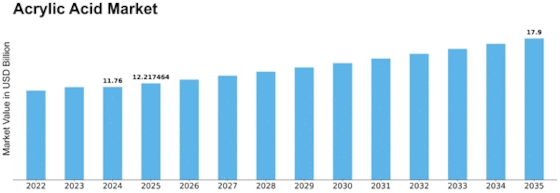

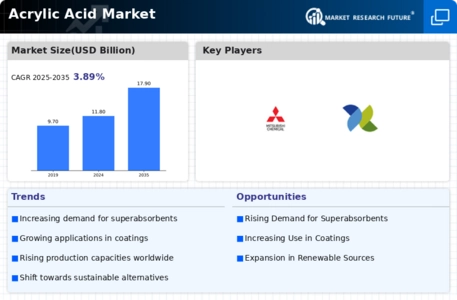

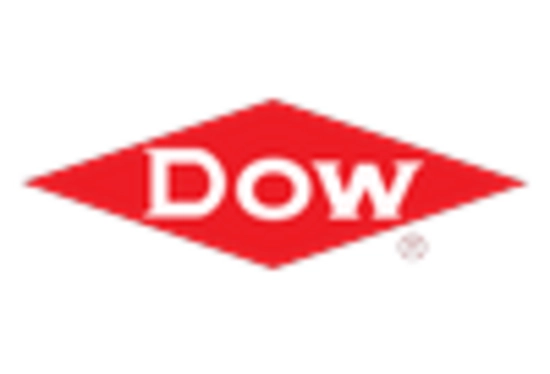
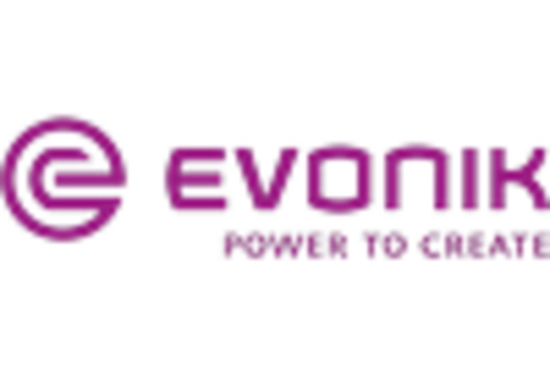
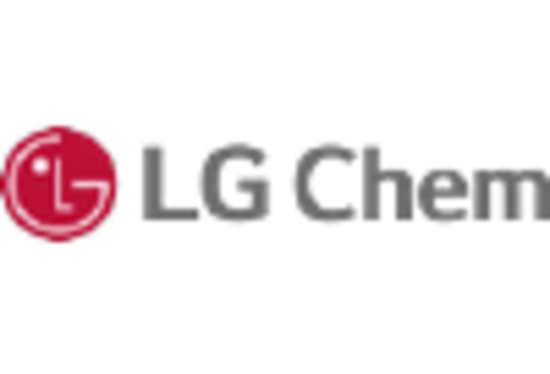
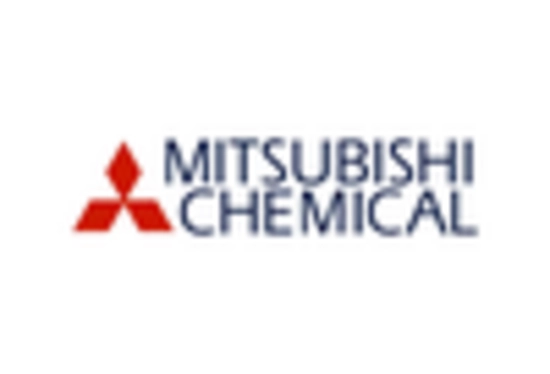
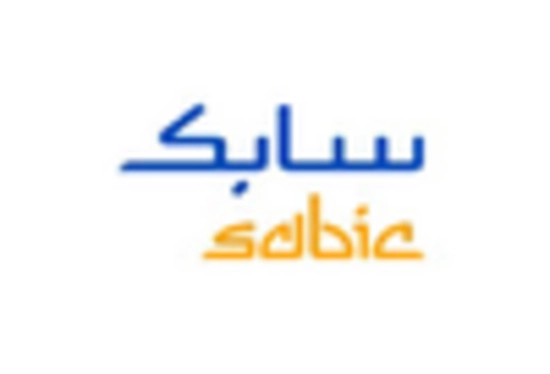

Leave a Comment